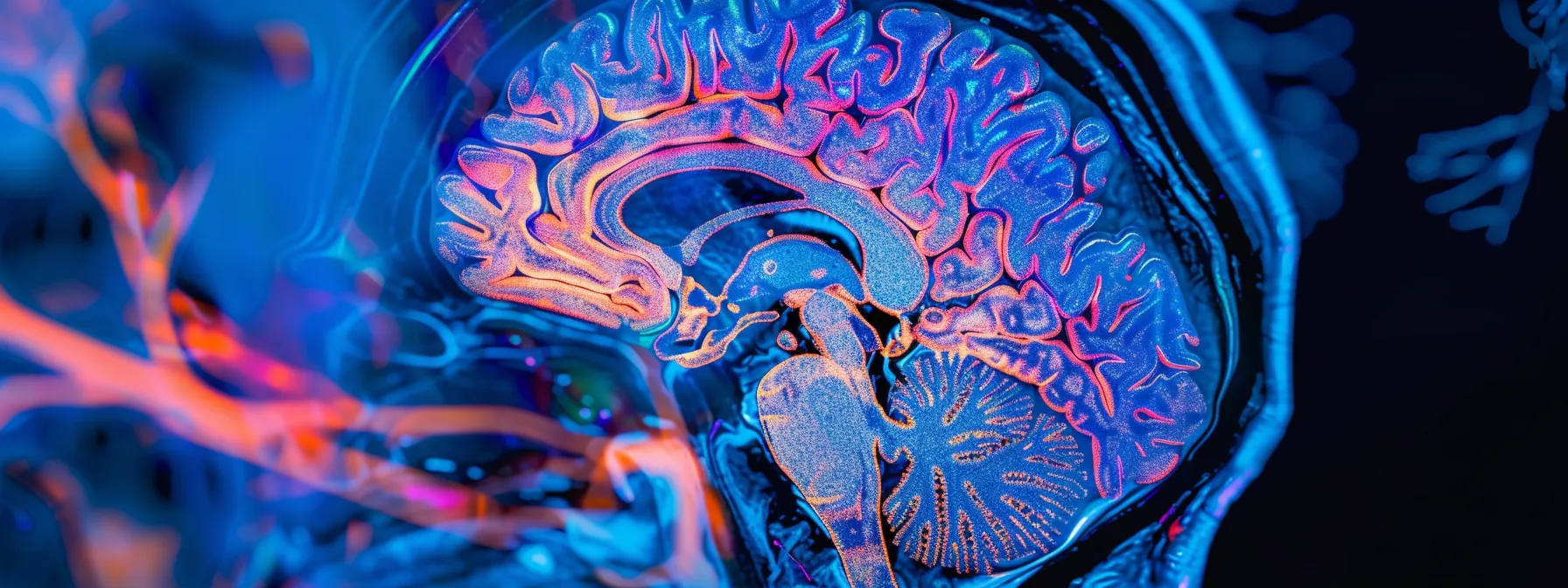Alzheimer’s disease has long been a haunting specter for the aging population, inflicting memory loss and a gradual decline in cognitive abilities. Scientists and medical professionals have been striving to understand the mechanisms behind this degenerative condition, which poses a growing challenge as our population ages. The journey into the Alzheimer’s enigma requires a deep dive into the changes that occur within the brain, altering the fabric of patients’ lives. Below, we’ll explore the path from initial symptoms to advanced stages of this debilitating illness. Keep reading.
Unraveling the Alzheimer’s Enigma: A Glimpse Into the Brain’s Deterioration
The hallmark of Alzheimer’s disease lies in its insidious onset, with subtle memory lapses giving way to profound neuronal damage. The brain, a once efficiently networked organ, begins to falter as connections between nerve cells weaken and eventually die. This neuronal death is not uniform across the brain but starts in areas critical for memory before spreading to other regions that control language, reasoning, and social behavior.
As the disease progresses, brain tissue shrinks dramatically, affecting nearly all its functions. While the initial symptoms may be chalked up to aging or stress, it becomes clear that the disintegration within the cerebral cortex and hippocampus is anything but normal. This disruption manifests not only in memory deficits but also in personality changes, with individuals becoming uncharacteristically irritable or withdrawn.
Understanding this cascade of brain deterioration is imperative in the fight against Alzheimer’s. Breakthroughs in neurology have illuminated the loss of synaptic connections as a crucial factor, emphasizing the complexity of potential treatments. The mysteries of the Alzheimers brain continue to provoke intense study as scientists seek to reverse or prevent the degenerative processes.
How Alzheimer’s Disease Affects Memory and Cognitive Functions

The cognitive footprint of Alzheimer’s disease is both distinct and devastating. Memory disturbances usually present first, with recent events and newly learned information slipping away. Over time, recollection of past experiences and learned skills also diminishes, stripping away layers of a person’s history and identity. It is this erosion of memory that often signals the need for a medical evaluation.
Language is another domain hard hit by Alzheimer’s. Individuals may struggle to find the right words, manifesting as pauses or substitutions in conversation. Comprehension deteriorates, particularly with complex instructions or when following the thread of a lengthy discussion. These impairments can lead to frustration, withdrawal, and social isolation for those affected.
Executive functions, which include planning, organizing, and problem-solving, also decline. This translates to difficulties managing finances, keeping up with personal hygiene, or navigating the myriad of daily tasks that were once second nature. The cumulative impact on an individual’s ability to live independently is profound and can create significant stress for caregivers and family members.
Investigating Genetic and Environmental Risk Factors for Alzheimer’s

Scrutinizing the underpinnings of Alzheimer’s disease has led researchers down two intertwined paths: genetics and environment. Certain genes have been identified that increase the risk of developing Alzheimer’s, particularly APOE4, a variant of the gene apolipoprotein E. Genetic testing can reveal a predisposition, but it is not destiny; environmental factors also play a crucial role in disease manifestation and progression.
Lifestyle choices and conditions such as diet, exercise, cardiovascular health, and even lifelong cognitive engagement may influence an individual’s Alzheimer’s risk. Public health initiatives emphasize these modifiable factors, encouraging healthy living to possibly delay the onset or slow the progression. The interaction between genes and lifestyle choices is complex, suggesting that preventive strategies must be tailored to individual risk profiles.
Advancements in Neuroimaging: Visualizing Alzheimer’s Impact on the Brain

Recent technological breakthroughs in neuroimaging have brought unprecedented clarity to the study of Alzheimer’s disease. Techniques such as positron emission tomography (PET) and magnetic resonance imaging (MRI) allow for the visualization of amyloid plaques and tau tangles within the living brain. These imaging advancements not only facilitate earlier and more accurate diagnoses but also provide valuable tools for monitoring disease progression and response to treatment.
Neuroimaging is pivotal in the quest for effective interventions. By capturing a patient’s brain structures and functions in detail, clinicians can tailor treatment strategies and provide prognostic information. As research trials incorporate these imaging techniques, a more nuanced understanding of the disease’s timeline is emerging, allowing scientists to pinpoint critical intervention windows.
Altogether, Alzheimer’s disease’s impact on the brain is a reminder of the complexities of our most vital organ. Although strides have been made in understanding and visualizing the disease, the human cost of Alzheimer’s remains high. Overall, our quest to decode this enigma is fueled by the hope that through research, compassionate care, and innovation, we can one day offer meaningful relief to millions of affected individuals and families.
